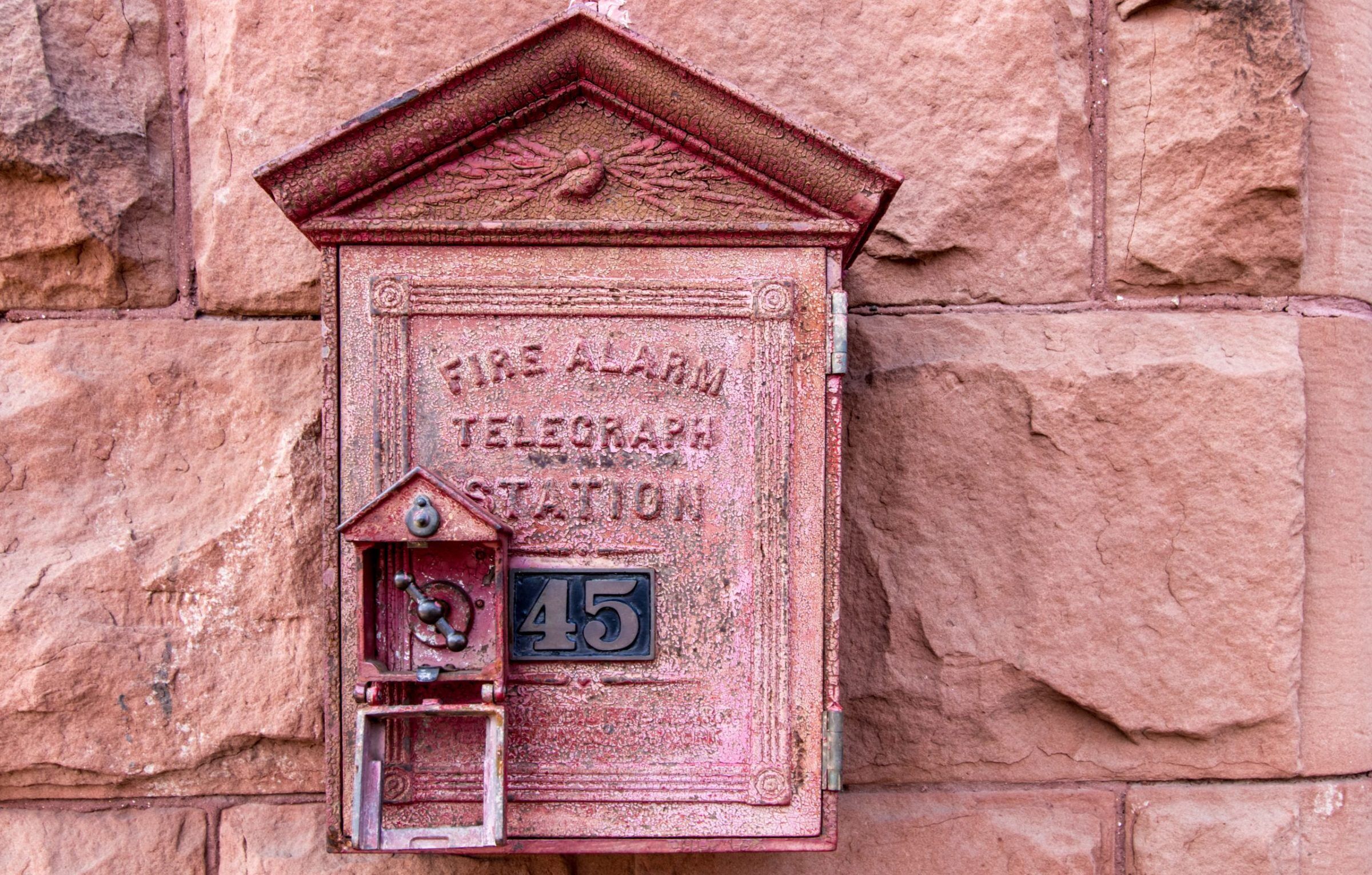A brief history of how fire alarms have evolved over time and a breakthrough technology that can complement your alarm system
Imagine a fire breaks out in your kitchen. You try to put it out yourself, but nothing seems to work. Smoke quickly fills the room, and it becomes difficult to breathe. Before you know it, the flames grow so fast that your only option is to evacuate the house.
Luckily, you make it outside safely, but despite your calls for help, emergency responders are nowhere to be found. As the fire engulfs your home, you wait for what feels like two hours before help finally arrives. But instead of a truck, protective gear, and a hose to put out the flames, the firefighters are equipped with a few buckets of water and a ladder.
Not exactly the kind of help you were hoping for, is it? Unfortunately, this was the harsh reality before the fire alarm was invented. With no way of communicating your emergency to the authorities, the situation would often already be out of control by the time help finally arrived.
Thankfully, however, those times are behind us. As we know them today, fire alarm systems were developed and perfected with over a century of research and innovation by scientists around the globe. Below, we’ll be taking a look at the exciting and revolutionary history of fire alarms and how their invention paved the way for the many alert systems we enjoy today.
Fire Prevention In Ancient Times
In ancient Rome, fire prevention looked a lot like the situation at the beginning of this article. After raging infernos threatened the city’s very existence, leaders appointed a team of local men to patrol the area and fight fires. These ancient emergency responders were typically armed with buckets of water, and if citizens weren’t following the established fire safety measures, they had the power to beat them!
Also, without any emergency alert systems in place, the response times of these flame-fighting brigades were solely dependent on word of mouth. It was better than nothing, but still not ideal. Unfortunately, it would take over a thousand years for more sophisticated fire-detection systems to develop.
The Original Fire Alarm
Nowadays, almost every building has an electrical fire alarm built into it. But before we harnessed the power of electricity, we had to find a different way to notify large numbers of people about fires in their area.
So, leading up to the 20th century, people relied on bell towers as the first fire alarm system. And with the creation of the first publicly funded fire station in Boston in 1679, emergency response to fires was starting to loosely resemble what we have today.
The Telegraphic Fire Alarm System
The invention of the telegram in 1837 was the spark that ignited the first wave of bonafide fire alarm systems in America. In 1852, two men from Boston – William Channing and Moses Farmer – created the first telegraphic fire alarm call box.
Channing and Farmer designed the box with a turnable knob that, when activated, would send an electrical signal to the local fire station. This signal would contain the box’s unique identification number, telling emergency responders the general location of the fire.
This revolutionary new invention became so popular that, by 1890, there were telegraphic fire alarm systems in five hundred cities across America. And believe it or not, they’re still in use today!
In 2018, when a fire broke out during a 911 outage in Boston, a resident pulled one of the fireboxes on a nearby street corner. Thanks to the reliable vintage alert system, firefighters responded quickly and put out the fire without any injuries.
The Evolution of Electric Fire Alarms
Although they’re still around today, telegraphic fire alarms were quickly overshadowed by electric fire alarms and heat detectors. In 1890, Francis Upton developed the first automatic electric fire alarm. And a little over a decade later in England, George Andrew Darby created the world’s first automatic heat detector.
Heat detectors monitored a room’s temperature, and when it rose beyond safe levels, the alarm would sound. These devices were widely used until the 60s or 70s when they were discovered to be less effective than automatic fire alarms.
With the invention of the ionized smoke detector in 1951, the path to residential fire detection systems was clear. By 1992, regulations required that a smoke detector be installed in every bedroom.
Rescu: The Future of Alert Systems
Fire alarms have evolved to integrate into home security and smart home systems and can even be set up to contact the fire department automatically. When paired with mobile alert systems like the Rescu app, it’s safe to say that protecting your home and family has never been easier.
With Rescu, you can alert first responders, avoid communication with dispatchers, and notify any emergency contacts immediately with just two taps on your mobile device. Think of it as your personal fire alarm call box that you can take everywhere, only much more effective and designed with state-of-the-art 21st-century technology.
If you’re on vacation and your home security system alerts you of a fire, 911 won’t be able to help. They can only respond to emergencies in your area. But with Rescu, you can request fire, police, and medical services to your desired address no matter where you are.
The future of fire protection is in the palm of your hand. Download the Rescu app today and take your home safety system with you wherever you go.
